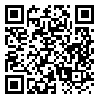Volume 3, Issue 4 (2014)
JCP 2014, 3(4): 467-477 |
Back to browse issues page
Download citation:
BibTeX | RIS | EndNote | Medlars | ProCite | Reference Manager | RefWorks
Send citation to:



BibTeX | RIS | EndNote | Medlars | ProCite | Reference Manager | RefWorks
Send citation to:
Rezaei N, Kocheyli F, Mossadegh M S, Talebi Jahromi K, Kavousi A. Effect of sublethal doses of thiamethoxam and pirimicarb on functional response of Diaeretiella rapae (Hymenoptera: Braconidae), parasitoid of Lipaphis erysimi (Hemiptera: Aphididae). JCP 2014; 3 (4) :467-477
URL: http://jcp.modares.ac.ir/article-3-4425-en.html
URL: http://jcp.modares.ac.ir/article-3-4425-en.html
Nastaran Rezaei  1, Farhan Kocheyli1
1, Farhan Kocheyli1  , Mohammad Saeed Mossadegh1
, Mohammad Saeed Mossadegh1  , Khalil Talebi Jahromi2
, Khalil Talebi Jahromi2  , Aurang Kavousi3
, Aurang Kavousi3 
 1, Farhan Kocheyli1
1, Farhan Kocheyli1  , Mohammad Saeed Mossadegh1
, Mohammad Saeed Mossadegh1  , Khalil Talebi Jahromi2
, Khalil Talebi Jahromi2  , Aurang Kavousi3
, Aurang Kavousi3 
1- Department of Plant Protection, Faculty of Agriculture, Shahid Chamran University, Ahvaz, Iran.
2- Department of Plant Protection, College of Agriculture and Natural Resources, University of Tehran, Karaj, Iran.
3- Department of Plant Protection, Faculty of Agriculture, University of Zanjan, Zanjan, Iran.
2- Department of Plant Protection, College of Agriculture and Natural Resources, University of Tehran, Karaj, Iran.
3- Department of Plant Protection, Faculty of Agriculture, University of Zanjan, Zanjan, Iran.
Abstract: (7102 Views)
The toxicity of thiamethoxam and pirimicarb on Diaeretiella rapae (Mc'Intosh) as a parasitoid of Lipaphis erysimi (Kaltenbach), exposed to residues on glass vials, was investigated under laboratory conditions at 23 ± 2 °C, 70 ± 5% RH and 16:8 h (L: D). Moreover, in order to find the negative impacts of both insecticides on the efficiency of D. rapae, the functional response of the exposed parasitoids were assessed. The newly emerged parasitoids were exposed to LC25 of the insecticides and distilled water as control. Host densities of 2, 4, 6, 8, 16, 32 and 64 were placed on canola seedlings in a transparent cylindrical container and were offered to the treated parasitoids. Type of functional response was determined by means of logistic regression method and the parameters, attack rate (a) and handling time (Th) were calculated by nonlinear regression model using SAS software. The parasitoid exhibited type II functional response in all experiments. Attack rates in control, pirimicarb and thiamethoxam were 0.057 ± 0.01,0.059 ± 0.013 and 0.040 ± 0.01 h-1, and handling times were 1.097 ± 0.1, 1.86 ± 0.02, 2.81 ± 0.296 h, respectively. Maximum rates of parasitism (T/Th) were estimated 21.87, 12.9, 8.53 aphids, respectively. These observations suggest that pirimicarb with less harmful effects is the preferred candidate for controlling the mustard aphid.
Received: 2013/12/17 | Accepted: 2014/04/8 | Published: 2014/12/1
| Rights and permissions | |
 |
This work is licensed under a Creative Commons Attribution-NonCommercial 4.0 International License. |







